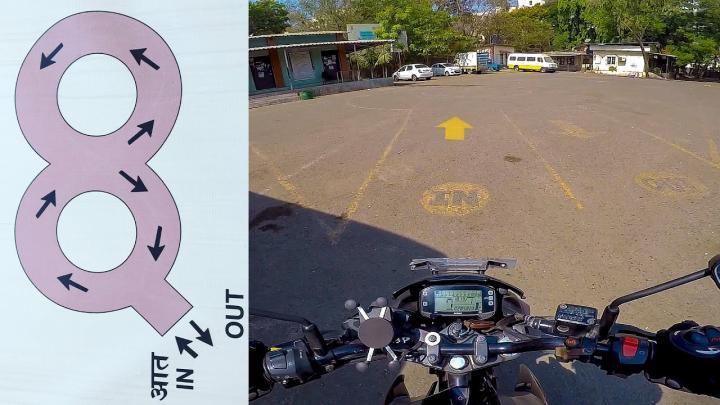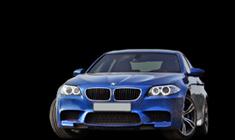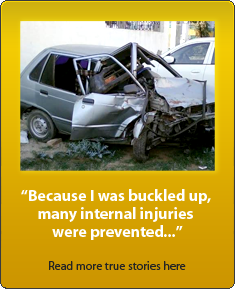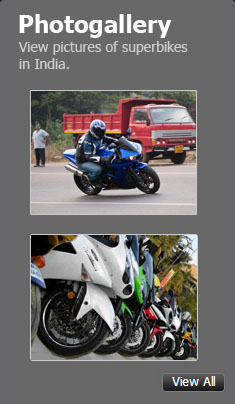News
2-wheeler driving test: Key points & tips for the preparation
My son is going for his two-wheeler driving test. What should I train him for? I don't recall anything other than the infamous "8".
BHPian sridhu recently shared this with other enthusiasts.
Hi,
Searched for this topic but did not get any results, hence the question here.
My son is going for this driving test (car & geared two-wheeler) shortly. He has been practicing driving the car fairly in-depth.
The issue is that there are no resources for the two-wheeler driving test. (There are plenty for four-wheelers and he has gone through most of them.)
What should be prepared for in the test? I don't recall anything other than the infamous "8".
More importantly, what should I be training him for being a good two-wheeler rider in real-world road-riding? All I could think of were:
- Emergency braking technique
- Handling potholes
- Signaling
Other esoteric stuff like leaning on curves, counter-steering, etc, I will get him to learn in a proper superbike training school. This is just for competently handling his bike in traffic without being that guy!
Any inputs are appreciated.
Here's what BHPian scenario7 had to say about the matter:
I got my car and geared two-wheeler license a few months back. I had gone to the KA-03 (Kasturinagar) RTO.
Regarding the two-wheeler driving test, you still have to drive in an 8 (not a complete 8 though). Basically, there is an empty rectangular ground with 4 cones in the middle in a straight line. You start off in a straight line, driving along the edge of the ground, passing the cones. Then you take a sharp right when you reach the end (near the last cone), and you zig-zag your way between the cones. So, it's not a complete 8. I have attached a figure explaining the same.
Some things which the inspectors are really particular about:
- When you get off from a standstill, please do so as smoothly as possible. If you get off suddenly, by excessively revving your bike and then aggressively releasing the clutch, it is definitely taken in a negative way.
- The inspectors are very specific about hand signals. For example, when you make the sharp right just before zig-zagging between the cones, indicate the same with a hand signal (along with the rotating hand) and the indicators of your bike. Similarly, while slowing down at the end of the test, give a hand signal again.
- Before the test, the inspector might ask you the basics of the bike. For example, where is the clutch, brake levers, etc. This is very rare but happens sometimes.
- Make sure you make at least 2-3 gear changes during the test. The inspectors constantly look at your feet to see if you are shifting gears.
- Please wear a mask inside your helmet as well. They are very particular about it.
- Please note that with incessant rains in Bengaluru, the ground may be very muddy at places. Avoid these muddy patches even if they are present in between two cones. Skip that part of the zig-zag portion and continue with the next cone. I saw multiple people getting their bikes stuck in the mud and then stalling the bike or losing balance and falling off. That was the end of the test for them.
Please note that I got a very strict inspector. I was fortunate enough to be one of the last people to give the test, so I had seen the inspector pointing out these things to the people before me and I made sure I did all the above. At the end of the day, it all depends on the inspector. You might get a very chilled out inspector, who is least bothered, and if you are able to drive around without stalling the bike, he will pass you in the test.
All the best for the test.
Here's what BHPian GeneralJazz had to say about the matter:
Just my 2 paise:
I learned how to ride a bike almost a decade after I started driving. By the time I started riding, I had a pretty good idea about what bad riding was. How overtaking from the left, tailgating cars (or any vehicle with better brakes), how drifting across lanes without using mirrors, how swerving to avoid potholes is dangerous, etc. depended on others to keep you alive. My wife is a newbie driver, and whenever she drives, I point out bad riders to her, so that if and when she has to ride a 2-wheeler, she would know how to be a better rider. Maybe you could try the same with your son.
Here's what BHPian swami69 had to say about the matter:
Every RTO is a little different in conducting 2-wheeler tests. It is better to check locally on the location they are conducting it, go there one day a couple of weeks early and watch how it is done. You can speak to the agents and participants and understand what is specifically required.
For TN14 RTO, they do this in one of the broken side roads with cones placed for an 8. On the day of the test, everybody practices at that place starting from 6.30 until the officer arrive at 8.30. Then they form a queue and one by one they do that in front of the officer.
- Smooth start
- Gear changes
- Not missing a cone
- Foot on the ground is sometimes ok
- Then come to a stop by raising your hand for the traffic behind
Hope this helps
Check out BHPian comments for more insights and information.








.jpg)










